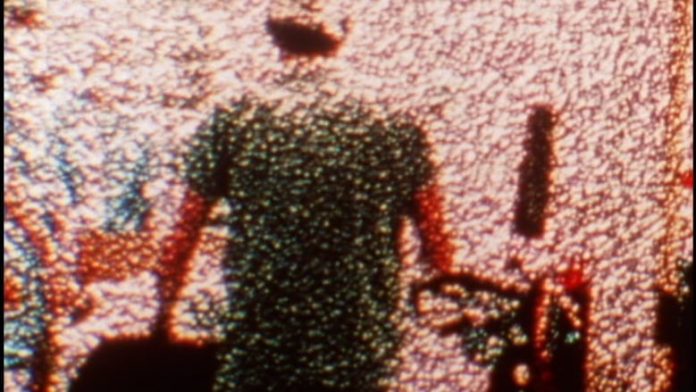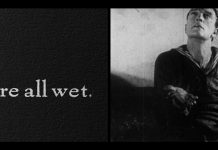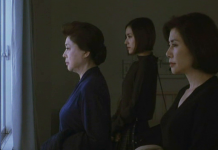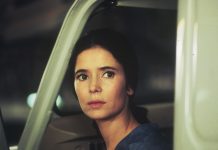
These fragments I have shored against my ruins
T.S. Eliot, The Waste Land
The cinema of Phil Solomon – an overwhelming experience of memory, love, history, childhood, death and jewish identity – is the fruit of a constant destruction and re-creation of the image, an image which is carved 24 fps in the unconscious, in the body, in life. A Trauer-Spiel (play, representation and “work” of the mourning) which engages both the author and the viewer, caught in the same way in a vortex of signs and ruins of the imaginary and of the history, in the same time melancholic collectors of traces and sense after the Fall and the Flood. The deepest substances of Solomon’s work are the border and the ambiguity: his films cross different conditions of the being (psyche and soma, conscious and unconscious, oblivion and memory), opposite worlds (day and night, wake and dream, reality and utopia), antitethic ontological status (abstract and concrete, bi-dimensional and 3D, liquid and solid), and reach a unique form for its compositive intelligence and emotional poetry.
Solomon answers to the questions with the generosity and the passion which are typical of a man who loves his work with the devotion of an artisan and the consciousness of an artist.
Where are you from? What’s the path that lead you to become one of the most interesting filmmakers of your generation ?
I was born on January 3, 1954 to Sam and Ruth Solomon. We lived in Astoria, Queens, N.Y. until 1959, when we moved to Monsey, N.Y., which is about 30 minutes north of NYC, in what was then the emerging “baby boom” suburbs in that area. There were lakes and woods and dirt roads – it was just at the very beginning of the middle class trek out the cities. My entire block seemed to be middle class and jewish, so one wonders how these things get planned. But the point is I believe that my Jewish-American background and cultural identity does play out somehow in the hermetic/mystical/alchemical aspects of my some of my work.
I felt very safe, protected, and finally had my own room in the new house. I can see from my Dad’s slides and home movies that I was a kind of thoughtful and introverted child, and I remember often retreating to my room to create my worlds of fantasy with models, comic books, and watching television. Then came rock and roll and owning my own stereo, with headphones. Stayed in my room a lot during those days…
Did very well in high school, but we couldn’t afford a private school, so I went to Harpur College (SUNY Binghamton) exactly at the right moment in time in history, at the end of the Rockefeller endowment years when there was a lot of money around for hiring new professors and bringing in visiting artists. So I studied with, at one time or another, Ken Jacobs, Ernie Gehr, Larry Gottheim, Dan Barnett, Saul Levine, Tony Conrad, and Peter Kubelka.
I didn’t know anything about avant-garde cinema before day one (thinking that ‘art film’ was European new wave and the first American film school generation films of the late 60s/early 70s). I knew little about art or classical music. I was raised and suffused with American pop culture. First day of class, Ken showed Tony Conrad’s THE FLICKER, and my world was turned upside down. It took me a long time to see the map of where to and how to look at this kind of cinema, but it was a shot-by-shot breakdown of Brakhage’s Anticipation of the Night (where I began to grasp the concepts of visual metaphor and graphic analogies in the frame and on the cut) and seeing Ken Jacobs’ pedagogical masterpiece Tom, Tom, the Piper’s Son that opened up my eyes and mind and really offered “the path”, as you put it. Finding the optical printer (it arrived after I left Binghamton) was the next step…
Your work seems to be at the intersection of Ken Jacobs’ and Stan Brakhage’s works: but you pass over both the cool intellectualism of structural cinema and the self-indulgence of home movie aesthetics. How could you call your kind of filmmaking ?
That is a very perceptive observation and one that I agree with. What I loved about Ken’s work was its rigor, its pursuit passed the initial flush of excitement into something deeply thorough, and his sense of the marvelous, uncanny image (I can always hear him saying, “look at this – fantastic!). He taught me to see all of film history with a different mind-set. The gesture of using found materials for him was one of rich context and deep respect for the original material, not the glib ironies of what I might call the “historical chauvinism” of many found footage pieces. Ken worked with what he considered revealing, beautiful or somehow getting to a deeper, submerged truth with use of historical materials and their illuminated trasnformations. Tom, Tom inspired the act of re-looking at and reconsidering the ostensible, the “evident”…Ken’s Nervous System and the performance pieces are about the ecstatic sublime, something that I longed for in my cinema as well – to be able to see, as Ken would have it, “the impossible”. To be hopelessly engaged in pre-language sensations of the wonderful…
I knew that I had to find a way around Stan. I was very drawn to the private and the personal, but I often have a deep sense of self-consciousness and embarrassment when shooting in the world. My films are deeply rooted in personal biography and iconography, but look toward a more allegorical (and symbolic) approach to the referent. The innermost rings of my films have references and meanings that are, in some ways, secret and unattainable; but I am banking on creating oneiric visions that tap into our subconscious storehouse of symbolic thinking. I am in search of the uncanny and the inevitable.The local and the universal. Images that are charged with wonder and seem to tap into some kind of truth – at least for me.
So, to answer your question, visionary cinema (from P. Adams Sitney) works just fine for what I am trying to achieve. That is more or less why there are no head or tail titles on the films. I want the visions to come on and recede, oceanic, vaporous, organic…
My films tell stories of a strange sort, with dream logic editing and poetic reverberations with each image and treatment.
Is the found footage in your hands the main propeller of the work? or do you use it only as material between the others ?
Depends on the film. With Nocturne, the photographed material was primary, and the found material only came much later in the editing process, when I saw affinities between my time exposed night footage and night bombing sequences from WWII – that made the film have a much larger scope than I had originally intended. Again, with What’s Out Tonight is Lost, the found material served as emblematic images of childhood that reverberated against my fogged, elegiac footage of areas around my parent’s home. With The Secret Garden, you now have a change to where the found footage (The Wizard of Oz and a subtitled version of The Secret Garden) completely inspired the work, and my photographed material (mostly of water) acted as intermediate Edenic imaginings. Remains to be Seen and The Exquisite Hour are really the most balanced and integrated films in terms of the use of found and original materials, but both films depended upon finding the right materials at some point in their making to “bring them home” (the surgery materials in Remains, the16mm home movies in Exquisite).
The Twilight Psalms have a different approach entirely – instead of waiting for the found materials to find me, I went out hunting for specific images with apriori ideas.
How do you work out the found footage with optical printer and with chemical treatments ?
Not sure what you mean exactly. If you mean technically, I treat the positive, processed images with chemical and organic treatments and then photograph it on the printer. Sometimes I dissolve between processed strips, other times I am treated a montage with built-in dissolves (that I already re-photographed). There are usually several stages to the process , with re-photography happening two or sometimes three times…
How often do you discover new things during the optical and chemical manipulation of the film? And how much do you want to control this process ?
This is why they call it experimental film – I do indeed experiment a great deal, but I only use the results that best express the imaged moment. I usually discover a great many things in the beginning of a film or an untried particular process (like Psalm II: “Walking Distance”), but then begin to master the technique to the point where I can induce or predict certain results and then begin to take that further, using variations or just simply trying things. The quivering, tearful end of Psalm III: “Night of the Meek” came to me just at the end of the shooting phase – I tried something (with the printer)m saw the result in “real time”, then guessed what it might look like at 24 fps. Once I saw the results, I did more, and got better at it.
I suppose I would have to answer that I would love to be able to completely control the process, but have the option to ask for serendipity to step in when I needed her…I like being surprised by what Stan called the “angels of film” when they visit, but I am, alas, a bit of a control-freak and would love to be able to really work with emulsion with the precision of Vermeer…
How much do you usually penetrate in the frame? How do you consider this work: is it an investigation or a material excavation ?
Interesting question. Again, depends on the film. With The Passage of the Bride, I am often zoomed in (on the printer) as close as I can get. Same with parts of Seasons… (made with Stan Brakhage) and the subtitled sections of The Secret Garden. With Remains to be Seen and The Exquisite Hour, I only (substantially) move in for certain shots for isolation and emphasis. In Remains, I focus in on the bicycle rider during that sequence, and I also move in on the reflections of people walking by (Thoreau’s) Walden Pond and then turn it upside down for what I call the “walking angels” sequence. In Exquisite, I isolate the silhouette of the man in the nursing home from original super-8, so it becomes very grainy. Night of the Meek is mostly close to full frame throughout.
It is an investigation first (I pay attention to what the materials tell me), then an excavation (I need to dig deeper than the original materials by treating it somehow, adding layers of ambiguity to get to the truth – so it’s a kind of excavation in reverse), and finally a formal semblance of feeling.
Do you write a script before filming or do you always find out new things during the work ?
Not a script as such, but I do keep notebooks and write down ideas and inklings as I daydream and percolate on the work. I am currently doing substantial research for American Falls, the 6-channel installation I’m doing in Washington, D.C. in 2009. But the reason I love this kind of filmmaking is because it is not contrived and then merely executed, but has a feeling of archeology, discovering ancient, hidden truths about “the world as I found it”. I love the adventure of putting together things that have never been placed together before to uncover what I call “inevitable ineffable”…
The first elements that impress the viewer of your films are the rhythm, the texture of the images, and a particular poetical resonance: music, painting and poetry are the all-bearing elements of inspiration for your works, cinema seems to be less important for you…
Hmmm. Yes and no. In terms of rhythm and texture and metaphor, yes, I look to music, painting, and poetry as the fount for ongoing inspirations. I keep those books open in my library all the time, to keep me company and to reaffirm my vision – and my vocation. But there is a narrative element in all of my work that comes directly from my initial love for the shared collective unconscious dream of the movies from my early years – the marvelous! magic! the miraculous! And mostly a sense of the illusory romance, of longing, of eternal wanting but not having…and many of my references are from the movies as well, particularly in my latest work (Last Days In A Lonely Place). I always wanted to find in poetic cinema the emotional depths that welled up, in profound recognition, from the depths of my soul in the very best of prosaic, narrative cinema, but without the shame of being falsely manipulated and hypnotized. One of the ways that I define art is that you remain you, and it remains it…a meditation on form. With most narrative cinema, you are no longer you…and that is the great pleasure of identification cues and fantasies, but it is not aesthetics as I understand it.
All your films have a strong poetic structure with metaphorical and allegorical echoes, themes and variations: a poetry of the dark, of the hidden, of the removed… and, at the same time, they are open to the viewer’s interpretation: how do you work on the borders ?
Beautifully put. The truth is, I really don’t know what others actually see in my work. Very few people (except for yourself and few others) have taken the time to really go deep with them. They are mostly seen once or twice, but not more than that, where as I, being a teacher for 30 years, have seen many (most?) avant-garde films at least 20 or 30 times. So I try very hard not to think about “the others”, as I simply cannot speak for them. After being on this planet for some 53 years, I have still encountered so few people who care as deeply for the things that I do. The point is that the exhibition and reception of the work is a vital, but secondary part of my process. It is mostly social for me, with varying degrees of excitement at “being seen” and “having the floor”, or alienation from people only getting onto the most superficial aspects of what I do (when I get questions like “how did you do that?” or “what chemicals are you using”?).
My job, as I see it, is to try and pay attention to work at hand – to see and hear what the work demands, what it needs, and what is actually there, and what needs to be done to give it life, form, balance, and a “just right-ness”. Stan called this “the muse” – I call it an exquisitely sensitive concentration and a state of utter empathy with the…temper…of a given image, a given sound, a given structure. I then go out of my studio, on the road, as we say, and “host” the work, and quietly search the night skies of audiences in the dark for the “others who are like me”….do you see what I see? Am I alone? Does anyone else see the aching beauty of this cut or the uncanny “such-ness” of this image? Does anyone here love this as much as much as I do? The answers, however kind, are often fleeting and dependent of what everyone else needs at that moment. But when the films have the entire room, it is a tender mercy, a holy thing, a rarified air…






